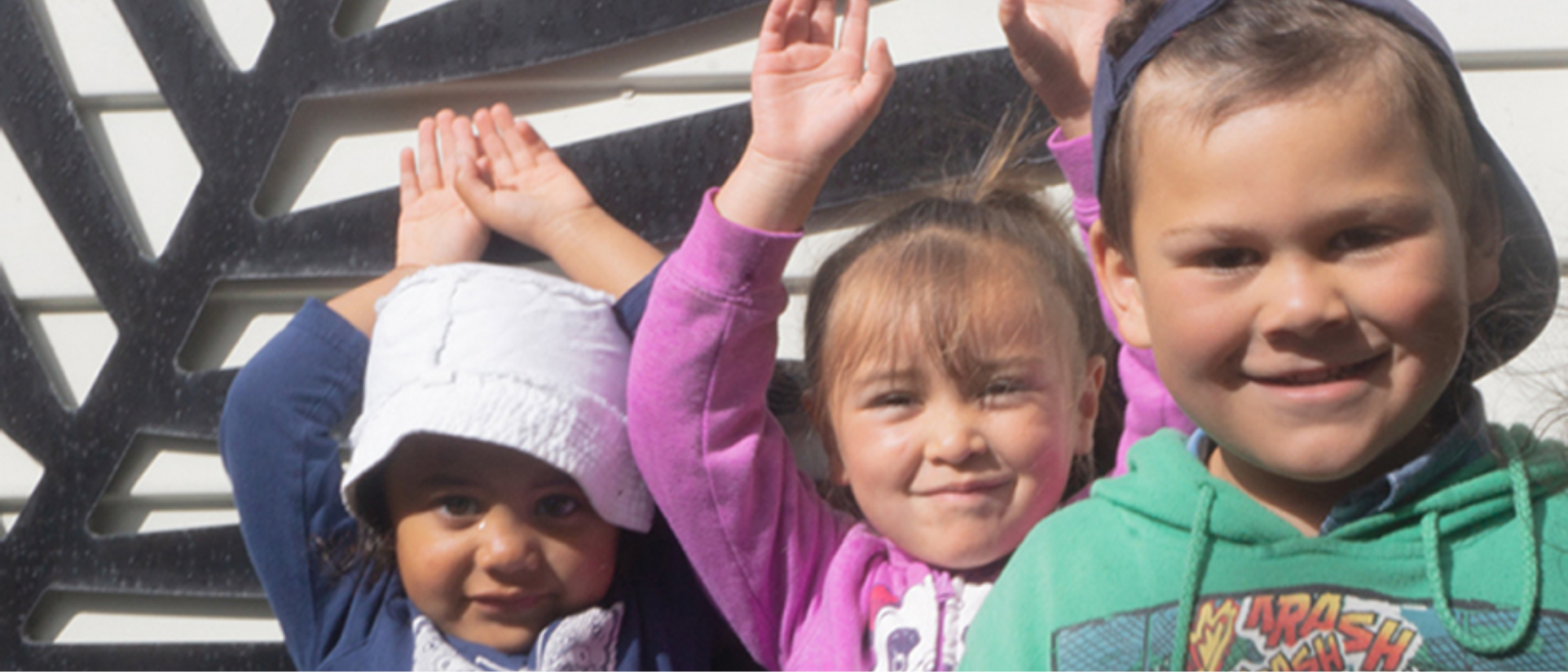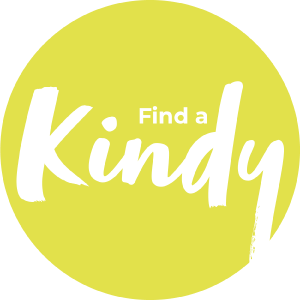
Benefits of mixed age groups
At Kidsfirst services, two year-old children (or younger, if it’s one of our early learning centres) play and learn alongside children of all ages. This ‘whānau grouping’ echoes the family and community-based structure that human beings are wired for.
As the old saying goes, it takes a village to raise a child, and with our lives getting busier, faster and more complex – that’s never been more true, as Pip Reilly from Kidsfirst Kendal Avenue explains.
“Tamariki today miss out on having a ‘village’ because they are living much more in isolation. Often, they don’t know their neighbours, the person at the end of the street or over the road. Grandparents sometimes live overseas or are working and unavailable, so when families come to a Kidsfirst kindergarten, they get their own village.”
Pip says creating a home-like structure at kindergarten positively reflects real life.
“You don’t really have set age classifications anywhere else you go. Perhaps in the primary school years, but even then, there are always children with varying abilities, regardless of age."
"At kindergarten, right from the beginning we help children understand the importance of tolerance and compassion for others, caring for others, listening, and all those other key life skills. It’s manaakitanga in action.”
Village disconnection is something more children are experiencing even in their preschool years. There is a trend occurring that segregates children into age-specific grouping with tailored activities. Many preschool centres now have ‘four year-old’ programmes, they promote as being preparation for primary school.
Preparation for life begins the moment we are born, preparation for school doesn’t magically start the day children turn four.
It’s something that is part of every day learning under the kindergarten philosophy, and in many more ways than sitting at a desk being taught letters and numbers.
Our Kidsfirst Kindergartens have resisted the “four year-old programmes” model, for good reason. But ask any new entrant teacher whether kindy kids are just as well prepared as other children for school and the answer will be a resounding ‘yes’. There’s also strong evidence that a mixed-ages model provides emotional, social and educational benefits.
Parents sometimes worry that the younger children are detracting from the experience of the older ones, Pip adds, “nothing could be further from the truth”.
“The younger ones may be more demanding and noisier, but the life skills that children learn through a whānau approach outweigh any drawbacks."
"For example, an older child won’t demand the same things of a younger one than they might of their own peers. They learn that the little ones are not ready yet. The older children may be impatient with friends, but not with the younger children. It’s about learning a gradient of tolerance, respect, caring and sharing within a mixed age group. The children are developing the core social behaviours and understanding of Manaakitanga. This value comes into play all the time.”
Older children also have the opportunity to learn leadership skills and feel a sense of pride in helping those younger than themselves.
“They are fabulous role-models, their empathy and compassion really shines through. The younger children look up to them and if there are things they want to do but can’t quite yet, they know the older ones will help.”
Kidsfirst Kendal Ave Head Teacher, Jackie Cooper, says a great deal of informal learning goes on just from younger ones watching, and aspiring to be like the big kids. Jackie says she sees the greatest confidence in tamariki who start kindergarten at the age of two.
“They’re listening to and watching the others all the time, so they take in language and behaviour, and also physical activity. The younger children watch the older children on the monkey bars and they always want to try and be like them.”
“We have a lot of children who have been here for a good two or three years already, and they become very settled. Because they are so settled and their well-being is great, their confidence is also amazing. They project and role model it to everyone around them.”
Older children learn to be patient with their younger peers. The watchful eyes of teachers also means that every difficult situation becomes a developmental opportunity.
“We will often say ‘Remember how the two year olds are still learning. They didn’t mean to knock your building down. Maybe you could help them rebuild it. Can you remember when you were two? You were still learning too.’ Right there – that’s your empathy and compassion growing.”
The lessons go both ways, with the younger children gaining new understanding, too.
“Two year-olds just do that kind of thing, and they don’t even think about it. They’ll say, ‘Oh, look what happened!’. We don’t make them feel bad about it, but we do draw their attention to what they’ve done so that it’s a positive experience, and so that everyone helps fix things.”
Jackie says that kind of approach looks straightforward, but takes a lot of patience.
“It takes time and energy, but the benefits are amazing.
I just think that when they leave to go to school, those older children have gained a variety of wonderful skills that they never would have received if they hadn’t had the younger age group.”
Every Kidsfirst child has their own individual learning plan with goals and aspirations. Kindergarten’s small class sizes mean that every child can be known and responded to as an individual.
Pip Reilly explains, “For example, if we’re doing group mat time and we’ve got a mixed age group, some children won’t be able to concentrate for as long because of their age. So they can choose activities of interest. We don’t expect them to be involved for as long as a four or four-and-a-half year-old can.”
Children are still encouraged to do what is right for them at their age and stage of development. Again, the learning is multi-layered.
The emphasis that kindergarten places on connection and community adds richness to the lives of tamariki, says Jackie.
“Whānau and caregivers know that they’re safe and happy and welcome. They know that they belong and that goes straight back to the New Zealand curriculum, Te Whariki, really. It’s all about the community and the family and having those links with people all the time.”
“Tamariki bring different things, and so do their whānau - aunties, uncles, mothers, fathers, grandparents. Everybody at this kindy knows that they are welcome, anytime.”
Learn more
How mixed age groups contribute to quality ECE in “High Quality Education and Care - an Overview.” Education Review Office, https://www.ero.govt.nz/publications/quality-in-early-childhood-services/high-quality-education-and-care-an-overview/
Teacher profile:
Pip Reilly
Pip has been teaching with Kidsfirst for almost a decade. ”The thing I admire most about the kindergartens is the play-based philosophy. I am passionate about, and thoroughly enjoy, being part of a team who work well together to help tamariki build on natural abilities and strengthen new interests. This passion continues into my love for working with young tamariki to help them develop and improve their social and emotional competencies."
There’s also some great reading here:
“Raising Confident Kids.” Parenting Place, 8 May 2019
JOIN OUR WHĀNAU





